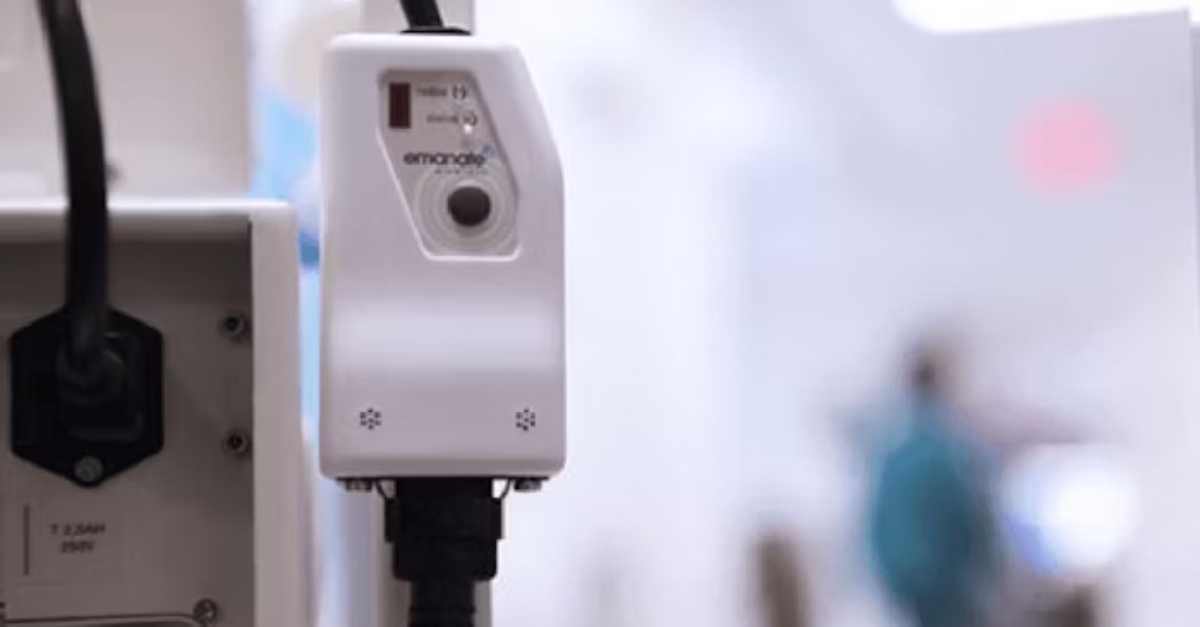
Using IoT to Fix Real Problems in Healthcare
The right IoT tools can help healthcare organizations overcome their most complex logistical challenges. Here's how to get it right.
Solutions
Workplace Management Solutions
Real Estate Management Solutions
Maintenance Management Solutions
Energy Management Solutions
Engineering Document Management Solutions
Asset Management Solutions
Automate campus scheduling for classes, meetings, and exams with our EMS software.
Plan and manage conferences effortlessly with EMS software to impress guests and streamline operations.
Boost workplace flexibility and maximize space use with seamless desk and room booking.
Organize workplace or campus events smoothly, creating memorable experiences.
Optimize workspace, manage allocations efficiently, and reduce costs with our space management solutions.
Deliver projects on time and within budget by improving communication, collaboration, and efficiency with our software.
Streamline lease accounting for ASC 842, IFRS, and GASB compliance.
Manage leases efficiently by tracking key dates, analyzing costs, and ensuring compliance.
Centralize data and analytics for better insights, faster negotiations, and revenue growth.
Centralize facility and asset maintenance, automate work orders, and ensure compliance with our CMMS software.
Extend asset life, reduce downtime, and prevent costly repairs with data-driven monitoring.
Prevent equipment failures and extend asset life by detecting and addressing issues early.
Make sustainable, cost-efficient energy decisions by monitoring and optimizing power consumption.
Remotely monitor and control equipment with real-time data to predict issues, boost efficiency, and reduce downtime.
Easily share and collaborate on documents, creating a single source of truth for engineers and contractors.
Manage and analyze assets across their lifecycle to schedule maintenance, reduce downtime, and extend lifespan.
Improve visibility, automate work orders, and ensure compliance for efficient facility and asset management.
Resources
Browse our full library of resources all in one place, including webinars, whitepapers, podcast episodes, and more.
Support
Looking for access to technical support, best practices, helpful videos, or training tools? You’ve come to the right place.
About Accruent
Get the latest information on Accruent, our solutions, events, and the company at large.

How can you create a hybrid work model that balances employee preference with overall business goals? Discover key techniques for flexible work — and see how the right technology can help.
By Stephanie Leontis, Senior Product Marketing Manager, Workplace Solutions
The pandemic changed the way businesses think about remote work. For the first time, many companies discovered that their employees could be productive and even shine in a work-from-home situation. But this environment has obstacles to navigate as well, such as decreased opportunities for collaboration, the potential loss of company culture, and more.
So rather than mandating full-time office work or implementing 100% work-from-home plans, many businesses are experimenting with flexible models of part-time in-person, part-time remote work. This has companies everywhere asking themselves:
“How can we create a flexible work model that benefits our workforce, customers, and business?”
Getting hybrid work right requires a balanced approach that takes employee preference into account while furthering overall business goals. Here’s what you need to know — and how the right technology can help.
As offices have reopened and businesses have shown a willingness to experiment with flexible work, they are seeing the following benefits:
The hybrid work picture isn’t all rosy, however. Managers cite challenges such as isolation and disengagement, missed communications, resentment between in-person and work-from-home personnel, and training and mentoring difficulties ― to name just a few.
These challenges are real. But they can be mitigated or overcome by focusing on five current trends and best practices for a thriving hybrid work environment.
Companies are being intentional about creating a workplace environment that caters to in-person interactions while complementing work done virtually.
The office’s role is increasingly where the workforce gathers to:
In this environment, the ability to find ideal meeting spaces has taken on increased importance. Workplace strategists are using desk booking software and room scheduling systems with calendar integrations, search filters, favorites lists, meeting recurrences, and setup wizards to save time and streamline collaboration.
These days, business are focusing on creating an environment where the workforce wants to come into the office. Firms are crafting exceptional workforce experiences to differentiate their brands and improve employee well-being, with features like:
Businesses are implementing technology to drive these initiatives. Hybrid work scheduling software offers features like full calendar integrations and check-in/ check-out through desk signs or mobile apps. And reporting tools give vital insights into important desk analytics, including where employees sit and which spaces are underutilized.
With fewer employees in the office each day, companies are exploring tools like office hoteling to optimize their real estate usage, resulting in an increased focus on getting rid of underutilized spaces.
And with technological advancements and the growth of the Internet of Things (IoT), measuring space utilization has become easier and more accurate. Consider sensors, trackers, imagers, and machine learning. For example, optical sensors in smart cameras can use real-time images to detect movement and better measure how many people are using private and shared spaces and determine when these spaces are most occupied.
Cloud-based workplace management software can then aggregate the data from these sensors and trackers to provide robust analytics and reporting ― for better space utilization decision-making.
As organizations welcome employees back to the office, they are also welcoming customers and clients back to the office. Customer meetings are highly polished, with touches like:
Behind the scenes, service managers are ensuring everything runs smoothly by integrating seamless email, ordering, and billing with all services groups. They are also creating white-glove office hoteling systems where employees can reserve desk space quickly and easily. This is typically done through a desk or room scheduling platform that eliminates potential errors like double bookings.
Today only a minority of organizations have the full technology necessary to support flexible work.
A Riverbed | Aternity global survey of business leaders in industries including finance, insurance, government, retail, and professional services found that just 32% of business decision makers and 33% of IT decision makers believe they are completely prepared to support long-term hybrid work.
But the situation is changing. So that employees feel connected and are productive wherever they are working, companies are putting the technology in place:
For businesses to thrive in a hybrid world, they will need to create a structure that allows for the workforce to continue to deliver productive, high-quality work that ultimately delivers on the company mission of serving customers.
The right IoT tools can help healthcare organizations overcome their most complex logistical challenges. Here's how to get it right.
In grocery, reducing energy spend can translate directly to decreased waste and increased profit. Here's how to get it right.
Learn how to successfully implement an alternative equipment maintenance system with the help of the right computerized maintenance management system ...
Subscribe to stay up to date with our latest news, resources and best practices.
* To unsubscribe at any time, please use the “Unsubscribe” link included in the footer of our emails.